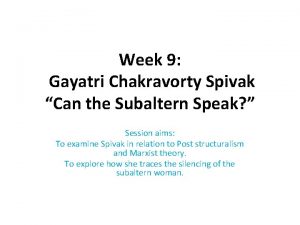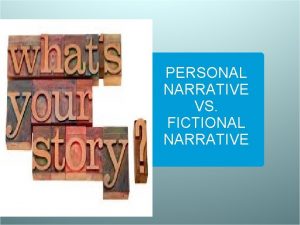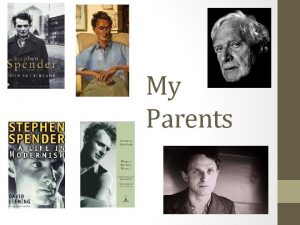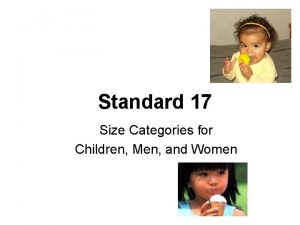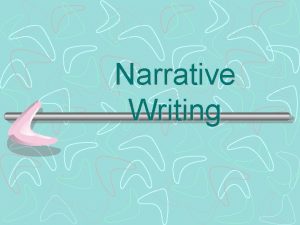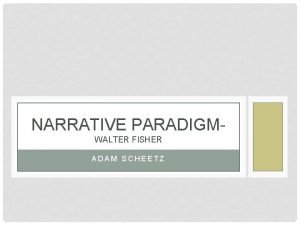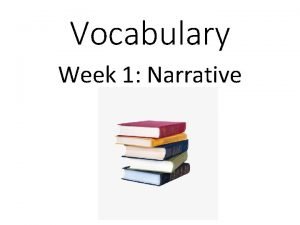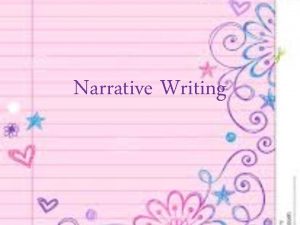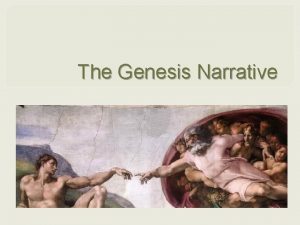Children of Men Narrative Children of Men Narrative








- Slides: 8

Children of Men Narrative

Children of Men – Narrative Theories Structure: �Tzvetan Todorov (Equilibrium / Disequilibrium etc. ) �Joseph Campbell (Hero’s Journey) �Vladimir Propp (Character functions) Codes �Roland Barthes (action codes; hermeneutic codes) �Claude Levi-Strauss (binary oppositions)

Children of Men – Narrative Theories To write about narrative, you need to be able to show: how these theories apply (or do not apply) to Children of Men (with lots of detailed reference to the film), how they interact with each other, and how they affect the film’s audience

Children of Men – Narrative Theories 1. Key Points about Todorovian structure: Clearly describe how each phase of the narrative is shown to the audience (what happens during the phase; what is the turning point that signals the shift to a new phase? ) Discuss the lack of a clear new equilibrium at the end of the film: what effect does this have on the audience? How does an audience react to Theo’s death? Relate the structure to Theo as the hero: how does each phase of the narrative reveal his character and/or act to transform him?

Children of Men – Narrative Theories 2. Key Points about Hero’s Journey structure: Clearly describe how each phase of Theo’s journey can be seen in the film (ordinary world; call to adventure; first threshold; tests; allies/enemies; approach to inmost cave; return/rebirth) Show the key stages of this narrative theory map onto the phases of the Todorovian structure (e. g. ordinary world = equilibrium; call to adventure = disruption etc. . )

Children of Men – Narrative Theories 3. Key Points about Propp’s character roles: Clearly describe how the roles of Hero, False Hero, Donor, Dispatcher, Helper, Princess can be seen in the film Discuss the lack of a clear villain character (role of villain is instead played by social and political forces such as the government and the Fishes) Discuss the way the film uses these character roles without dividing the characters clearly into good and evil, and explain what effect this would have on an audience

Children of Men – Narrative Theories 4. Key Points about Narrative Codes: Clearly describe how key action codes act as turning points between phases of the Todorovian structure of the film Discuss how enigma codes relate to particular phases of the narrative (e. g. what enigmas are raised by the equilibrium and how (if at all) are they resolved? ) Discuss how the film does not use clear binary oppositions between good and evil, but instead features flawed characters on both sides. What effect will this have on audience responses to the film?

Children of Men – Narrative Theories Narrative Essay: Structure: Begin by outlining the Todorovian structure – summarise the narrative phases and how they fit the film In more depth, analyse how the Todorovian structure fits with the Hero’s Journey and Propp’s character functions (e. g. the equilibrium phase introduces Theo as the Hero in his ordinary world; the disruption begins when Julian (the dispatcher) calls him to adventure by kidnapping him. . . etc. ) Analyse how the different narrative codes (action, enigma, binary) help to signal the turning points of the narrative As you go through the essay, comment on how audiences would respond to the different narrative elements. Focus especially on how audiences would respond to the places where the film does not clearly fit the narrative theories (e. g. the lack of clear resolution at the end)
